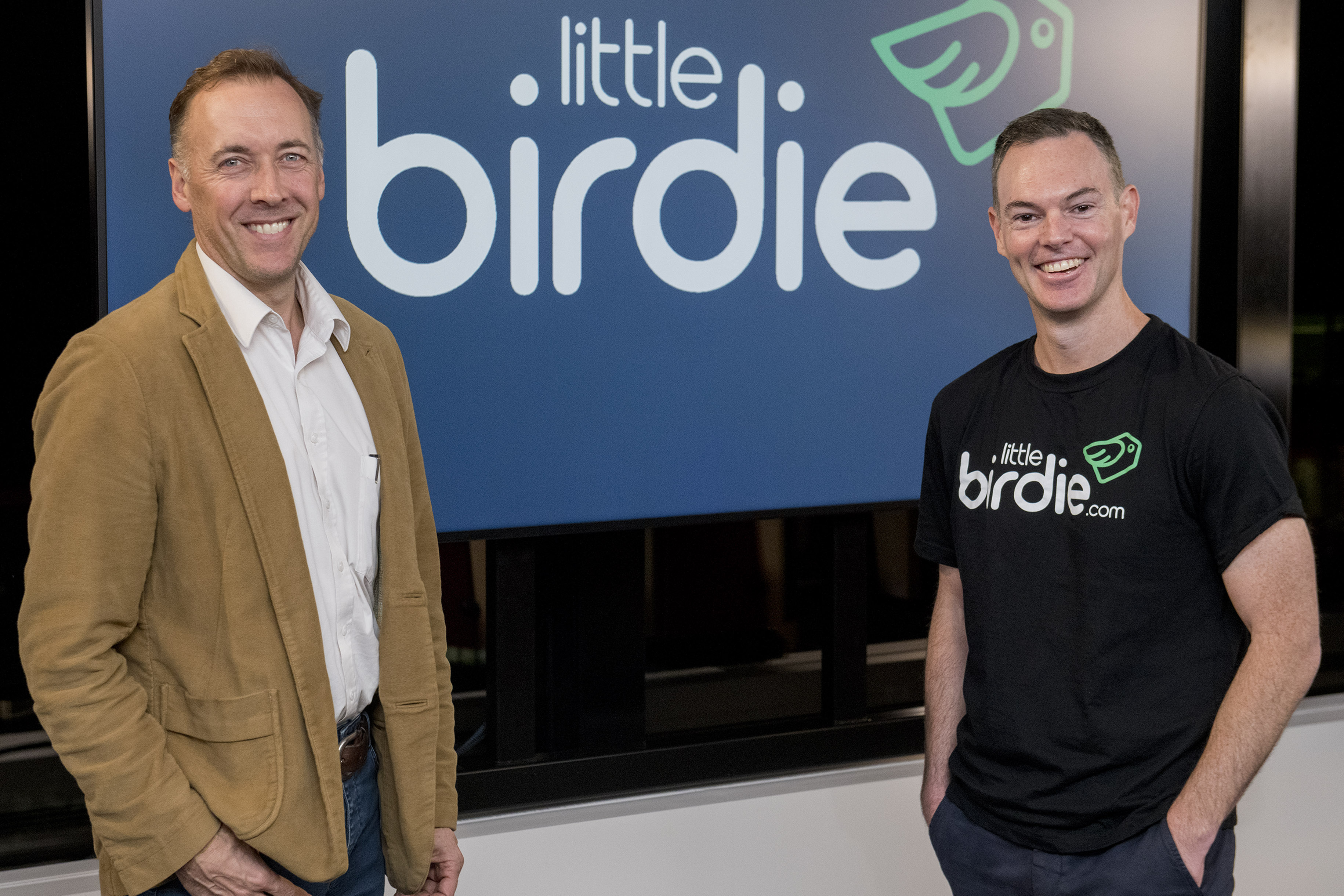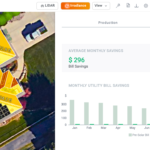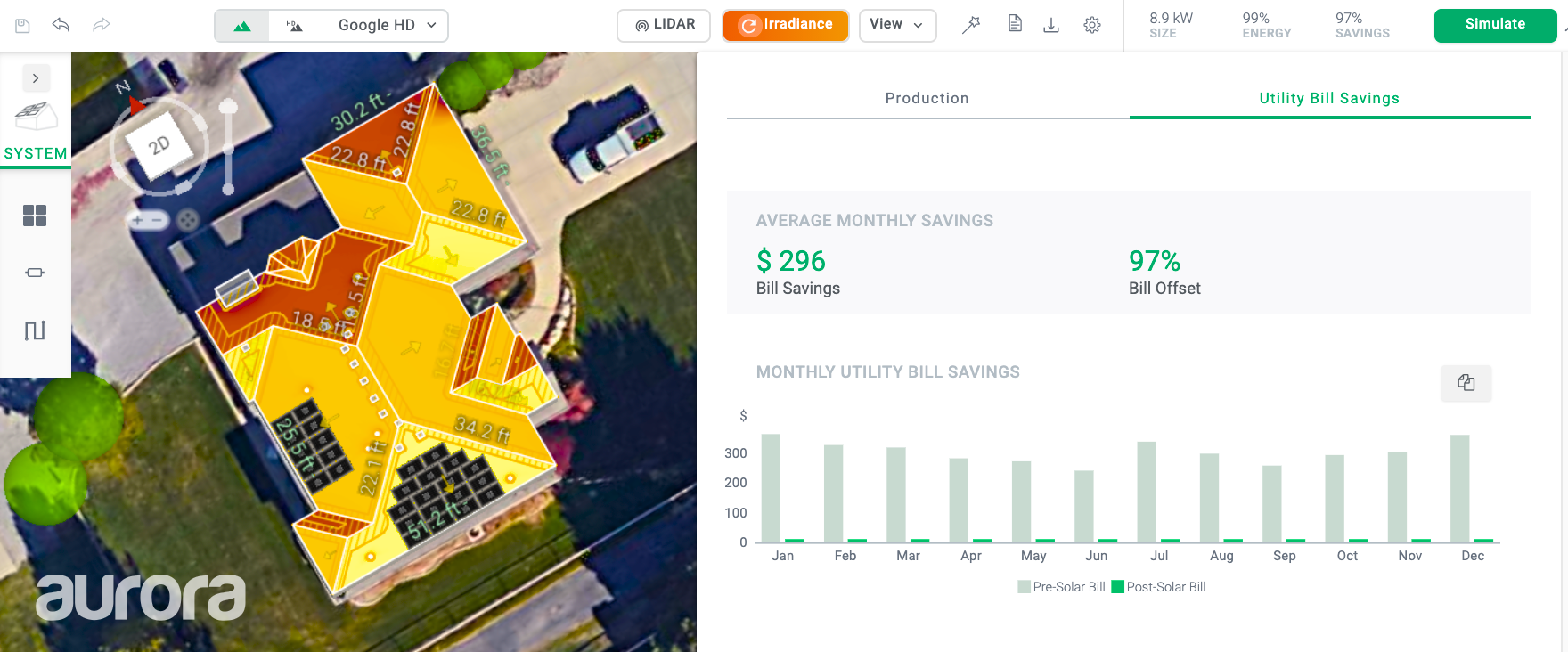For this morning’s edition of The Exchange, Alex Wilhelm studied information recently released by mobile gaming studio Jam City as it prepares to go public in a $1.2 billion blank-check deal with DPCM Capital.
“Jam City is a bit like Zynga, but unless you are a mobile-gaming aficionado, you might not have heard of it,” he writes.
Since its launch, Jam City has raised upwards of $300 million, including a $145 million round in 2019. At the time, the company was riding high after signing a deal with Disney to adapt some of the media giant’s intellectual property, which includes brands like Marvel, Fox and Pixar.
Almost half of all Americans play mobile games, so Alex reviewed Jam City’s investor deck, a transcript of the investor presentation call and a press release to see how it stacks up against Zynga, which “has done great in recent quarters, including posting record revenue and bookings in the first three months of 2021.”
(Full disclosure: the second time I worked at a startup founded by Mark Pincus, Zinga slept behind my desk and I was one of her favorite dog-sitters.)
Thanks for reading Extra Crunch; I hope you have an excellent weekend!
Walter Thompson
Senior Editor, TechCrunch
@yourprotagonist
Full Extra Crunch articles are only available to members
Use discount code ECFriday to save 20% off a one- or two-year subscription
5 ways to raise your startup’s PR game
The ability to effectively communicate can make or break your launch. It will play a role in determining who wins a new space — you or a competitor.
So how do you make a splash? How do you stay relevant?
For one, you have to stop thinking that what you are up to is interesting.
Every early-stage startup must identify and evaluate a strategic advantage

Image Credits: Eoneren / Getty Images
Whether you’re building a company or thinking about investing, it’s important to understand your strategic advantage.
In order to determine one, you should ask fundamental questions: What’s the long-term, sustainable reason that the company will stay in business?
As M&A accelerates, deal-makers are leveraging AI and ML to keep pace
The global pandemic has changed the way we work, including how and where we work. For those involved in the mergers and acquisitions (M&A) industry, a notoriously relationship-driven business, this has meant in-person boardroom handshakes have been replaced by video conference calls, remote collaboration and potentially less travel in the future.
The pandemic has also accelerated digital transformation, and deal-makers have embraced digital tools to help them execute effectively.
The quickening pace of digital transformation is no longer about ensuring a competitive edge. Today, it’s also about business resilience. But what’s on the horizon, and how else will technology evolve to meet the needs of companies and deal-makers?
There are still many inefficiencies in managing M&A, but technologies such as artificial intelligence, especially machine learning, are helping to make the process faster and easier.
New Relic’s business remodel will leave new CEO with work to do

Image Credits: Malte Mueller / Getty Images
Lew Cirne, New Relic’s founder and CEO, is stepping into the executive chairman role. He will be replaced by Bill Staples on July 1.
Cirne spent the last several years rebuilding the company’s platform and changing its revenue model, aiming for what he hopes is long-term success.
TechCrunch decided to dig into the company’s financials to see just what challenges Staples may face as he moves into the corner office. The resulting picture is one that shows a company doing hard work for a more future-aligned product map and business model, albeit one that may not generate the sort of near-term growth that gives Staples ample breathing room with public investors.
Fast growth pushes an unprofitable no-code startup into the public markets: Inside Monday.com’s IPO filing
At long last, the Monday.com crew dropped an F-1 filing to go public in the United States. TechCrunch has long known that the company, which sells corporate productivity and communications software, has scaled north of $100 million in annual recurring revenue (ARR).
The countdown to its IPO filing — an F-1, because the company is based in Israel, rather than the S-1s filed by domestic companies — has been ticking for several quarters.
The Exchange has been riffling through the document since it came out, and we’ve picked up on a few things to explore.
The battle for voice recognition inside vehicles is heating up

Image Credits: Bryce Durbin
Until recently, integrating affordable voice-recognition software into an automobile was something from science fiction.
But last year, the percentage of vehicles offering in-car connected services reached 45%. By 2024, analysts predict cars with voice recognition will comprise 60% of the market.
Considering how much time many of us spend behind the wheel, there’s an infinite number of applications for the technology. For our latest Extra Crunch market map, we sized up the general market opportunity before creating a roster of major players and reaching out to investors to see where they’re placing bets.
Industrial automation startup Bright Machines hauls in $435M by going public via SPAC

Image Credits: Teera Konakan / Getty Images
Bright Machines is going public via a SPAC-led combination that will see the 3-year-old company merge with SCVX, raising gross cash proceeds of $435 million in the process.
After the transaction is consummated, the startup will sport an anticipated equity valuation of $1.6 billion.
The Bright Machines news indicates that the great SPAC chill was not a deep freeze. And the transaction itself, in conjunction with the previously announced Desktop Metal blank-check deal, implies that there is space in the market for hardware startup liquidity via SPACs. Perhaps that will unlock more late-stage capital for hardware-focused upstarts.
We took a look at what Bright Machines does, and then the financial details that it shared as part of its news.
Want to double your rate of return? Seek counsel from experienced executives
As a rule of thumb, it takes 7-8 years for a successful startup to achieve an exit. But there’s a simple way to speed up the clock: Bring in one or more founders who have previous executive experience.
According to data gathered by Rob Olson, partner and head of data strategy at venture engine M13, startups that have two or more experienced founders tend to exit 33% faster and raise 34% less capital.
“Combined, these two improvements can nearly double an investor’s rate of return,” says Olson.
Should startups build or buy telehealth infrastructure?
Digital health in the U.S. got a huge boost from COVID-19 as more people started consulting physicians and urgent care providers remotely in the midst of lockdowns. So much so that McKinsey estimates that up to $250 billion of the current healthcare expenditure in the U.S. has the potential to be spent virtually.
The prominence of digital health is undoubtedly here to stay, but how it looks and feels from provider to provider is still a debate among sector startups.
But for providers who want to deliver care virtually across the country, it’s not as simple as adding a Zoom invite to an annual check-up. The process requires intention every step of the way — right from the clinicians delivering remote care to the choice of payment processor.
Help TechCrunch find the best email marketers for startups
Email marketing has been with us for decades, but today it has been refined to a science and an art form.
If you’re an early-stage founder, it is one of the best ways to build and grow your direct relationship with your customer. You know how fickle the platforms can be. You can’t afford to mess this up.
So when and how should you think about doing email marketing, versus all of your other frantic priorities?
Here at Extra Crunch, we’re helping you find the answers. We launched a survey of founders who want to recommend a great email marketer or agency they have worked with to the rest of the startup world.
Fill out the survey here.
For companies that use ML, labeled data is the key differentiator

Image Credits: gremlin / Getty Images
When a company chooses supervised learning, it needs to have a strategy that allows it to label data as quickly as it acquires it.
Supervised learning is currently the most practical approach for most ML challenges, but it requires the crucial additional step of making raw data smart by labeling it.
How Expensify got to $100M in revenue by hiring ‘stem cells’ and not ‘cogs in a wheel’

Image Credits: Nigel Sussman
The influence of a founder on their company’s culture cannot be overstated. Everything from their views on the product and business to how they think about people affects how their company’s employees will behave, and since behavior, in turn, informs culture, the consequences of a founder’s early decisions can be far-reaching.
So it’s not surprising that Expensify has its own take on almost everything it does when you consider what its founder and CEO David Barrett learned early in his life: “Basically everyone is wrong about basically everything.”
As we saw in part 1 of this EC-1, this led him to the revelation that it’s easier to figure things out for yourself than finding advice that applies to you. Eventually, these insights would inform how he would go about shaping Expensify.
Inside Marqeta’s fascinating fintech IPO
Marqeta, long a darling of the fintech market though less well known than some companies in its sector due to its infrastructure nature, filed to go public late last week
If you are not familiar with Marqeta, it powers the payment card tech behind products that you use, like Square, a key customer and driver of the unicorn’s growth. Marqeta exhibits a number of fascinating fintech characteristics (majority revenue from interchange, a rabidly competitive market) that make it very interesting to unspool.
May Mobility’s Edwin Olson and Nina Grooms Lee and Toyota AI Ventures’ Jim Adler on validating your startup idea

When a founder has a work history that includes the name of the parent company of one of their key investors, you probably assume that was one of the first deals to come together. Not so with May Mobility and Toyota AI Ventures, which connected for the company’s second seed round after May went out and raised its original seed purely on the strength of its own ideas and proposed solutions.
That’s one of the many interesting things we learned from speaking to May Mobility co-founder and CEO Edwin Olson, as well as Chief Product Officer Nina Grooms Lee and Toyota AI Ventures founding partner Jim Adler on an episode of Extra Crunch Live.
Extra Crunch Live goes down every Wednesday at 3 p.m. EDT/noon PDT. Our next episode is with Sequoia’s Shaun Maguire and Vise’s Samir Vasavada, and you can check out the upcoming schedule right here.
Meanwhile, read on for highlights from our chat with Olson, Grooms Lee and Adler, and then stay tuned at the end for a recording of the full session, including our live pitch-off.
WalkMe is going public: Let’s stroll through its numbers

Image Credits: Getty Images / Somyot Techapuwapat / EyeEm
WalkMe is the second Israel-based technology company to file to go public this week: No-code startup Monday.com is also pursuing an American IPO.
WalkMe’s software provides visual overlays on websites that help users navigate the product in question. Per the company’s F-1 filing, other elements of its service that matter include its onboarding system, Workstation, or its “single interface to the applications within an enterprise and simplifies task completion through a natural language conversational interface and automation.” We’re including that last feature because it says “automation,” which, in the wake of the UiPath IPO, is a word worth watching. Investors are.
At a high level, WalkMe is a SaaS business, which means that when we digest its results we are digging into a modern software company. Let’s do just that.
Can Squarespace dodge the direct-listing value trap?
Squarespace’s reference price has been set at $50 per share.
We went over Squarespace’s recently disclosed Q2 and full-2021 guidance and asked how its expectations compare to its reference-price-defined pre-trading valuation. Then, we set some stakes in the ground regarding historical direct-listing results and what we might expect from the company as it adds a third set of data to our quiver.
Let’s get into the numbers!
Mapping out one edtech company’s $200M bet on lifelong learning

Image Credits: Getty Images / DrAfter123
Mumbai-based Emeritus, an edtech company that works with universities to create online upskilling courses for employed folks, just spent a big chunk of cash to break into K-12.
Emeritus, which is part of the Eruditus group, announced this week that it plans to acquire iD Tech, a STEM education service for children. The acquisition, which has not yet closed, is estimated to be around $200 million and leaves iD Tech operating as an independent brand for now.
ID Tech brings a whole different set of customers to its umbrella: The startup offers courses for elementary through high-school students across the globe taught by college students in the U.S.
5 innovative fundraising methods for emerging VCs and PEs

Image Credits: Hiroshi Watanabe / Getty Images
According to Versatile VC founder David Teten, five new strategies are gaining traction among fund managers looking to raise capital from family offices and high-net-worth individuals:
- Online communities and virtual events.
- Platforms that help other investors access your fund.
- Soliciting under the 506(c) designation.
- Launching a rolling fund.
- Crowdfunding from retail investors into a general partnership.
In a summary of a class he taught for the Oper8r VC fund accelerator, Teten offers actionable advice for anyone who wants to connect with pre-qualified investors.
Dear Sophie: What’s happening with visa application receipt notices?

Image Credits: Bryce Durbin/TechCrunch
Dear Sophie,
Our startup employs several individuals who are on work visas or have employment authorization. Many of them have been waiting for quite a while for the government to tell them their applications have been received.
Why? When will things be back on track? We have a few employees who are waiting for green cards, and a few F-1 visa holders who will be extending their OPT to STEM OPT.
Is there anything we can do?
— Patient in Pasadena
Arrival’s Denis Sverdlov on the new era of car manufacturing

Image Credits: Bryce Durbin
Electric vehicle company Arrival wants to break the current auto manufacturing model. Instead of one giant factory and an assembly line, Arrival’s commercial electric vans, buses and cars are robotically built in small, regional microfactories, of which the company wants to open 31 by the end of 2025.
If you want to achieve something radically more efficient, you have to go deeper, into complex, high-level computational algorithms that are not normally used in consumer-facing products.
The London-based company, founded in 2015, joined the ranks of EV companies going public via SPAC, merging with blank-check company CIIG Merger Corp. in March. UPS has already ordered 10,000 of Arrival’s robotically engineered vans, and the company recently signed a deal with Uber to create purpose-built EVs for ride-hail drivers.
Arrival founder Denis Sverdlov has been at the intersection of technological advancement and societal change before.
Chasing hype is human nature: The tyranny of startup trends

Image Credits: Nuthawut Somsuk / Getty Images
The fear of missing out (FOMO) spreads faster than wildfire and often overwhelms rational decision-making.
In the VC community, investors look for lessons from disruptive startups they can use to identify other potential winners. But hype leads to bad decision-making, rushed due diligence and wishful thinking.
When and if those startups actually do well, “irrational FOMO takes over” because the initial assessment was based on bad information, says Victor Echevarria, a partner at Jackson Square Ventures. “Trends are addictive; to remain disciplined and avoid hype is to deny our innate instincts.”
It’s natural for investors to follow the crowd, but in the race to the bottom, FOMO can be high-octane fuel.
Robinhood’s epic Q1 growth explains its fundraising boom
The Exchange explores Robinhood’s financial results using the lens of payment for order flow (PFOF) income, which the company said during a congressional hearing constitutes the majority of its revenues.
This particular revenue growth — or the lack thereof — is a good way to understand not only Robinhood’s own results but also its larger market. If Robinhood is seeing rapid growth and strong trading volumes, we can infer with some confidence that others in its space are enjoying a related, if not similar, level of interest.
For Public.com, eToro and others like Freetrade (as well as our own understanding), how Robinhood performed recently is key. So, let’s explore the data.
How to ensure data quality in the era of Big Data

Image Credits: gremlin / Getty Images
A little over a decade has passed since The Economist warned us that we would soon be drowning in data. The modern data stack has emerged as a proposed life-jacket for this data flood — spearheaded by Silicon Valley startups such as Snowflake, Databricks and Confluent.
Today, any entrepreneur can sign up for BigQuery or Snowflake and have a data solution that can scale with their business in a matter of hours. The emergence of cheap, flexible and scalable data storage solutions was largely a response to changing needs spurred by the massive explosion of data.
Currently, the world produces 2.5 quintillion bytes of data daily (there are 18 zeros in a quintillion). The explosion of data continues in the roaring ‘20s, both in terms of generation and storage — the amount of stored data is expected to continue to double at least every four years. However, one integral part of modern data infrastructure still lacks solutions suitable for the Big Data era and its challenges: Monitoring of data quality and data validation.
Investors help Procore build a decacorn valuation in public debut
Watching construction tech software company Procore go public Thursday after pricing above its range makes the IPO slowdown look like the deceleration that wasn’t.
Investors quickly bid up the company’s value in trading, giving Procore a higher valuation than it might have anticipated, along with a boost of confidence for the IPO market in general.
Construction tech may not be as glamorous as space travel, but it’s a massive industry that’s fraught with inefficiencies.
Procore initially set an IPO range of $60 to $65 per share before pricing at $67 per share Wednesday night. Its debut was worth gross proceeds north of $600 million and a fully diluted valuation of $9.6 billion. As of early afternoon Thursday, shares were trading at a solid $85.25.
In light of Procore’s debut, TechCrunch is digging quickly into the company’s new valuation and its resulting revenue multiples.
Telemedicine startups are positioning themselves for a post-pandemic world
It’s impossible to predict how healthcare institutions will operate post-pandemic, but with so many people now accustomed to telemedicine, startups that provide services around virtual care continue to be poised for success.
Telemedicine has faced an uphill battle to become more relevant in the U.S., with challenges such as meeting HIPAA compliance requirements and insurance companies unwilling to pay for virtual visits. But when COVID-19 began raging across the globe and people had to stay home, both the insurance and healthcare industries were forced to adapt.
Now that people see the benefits and conveniences of “dialing a doc” from the kitchen table, healthcare has changed forever.

Powered by WPeMatico































